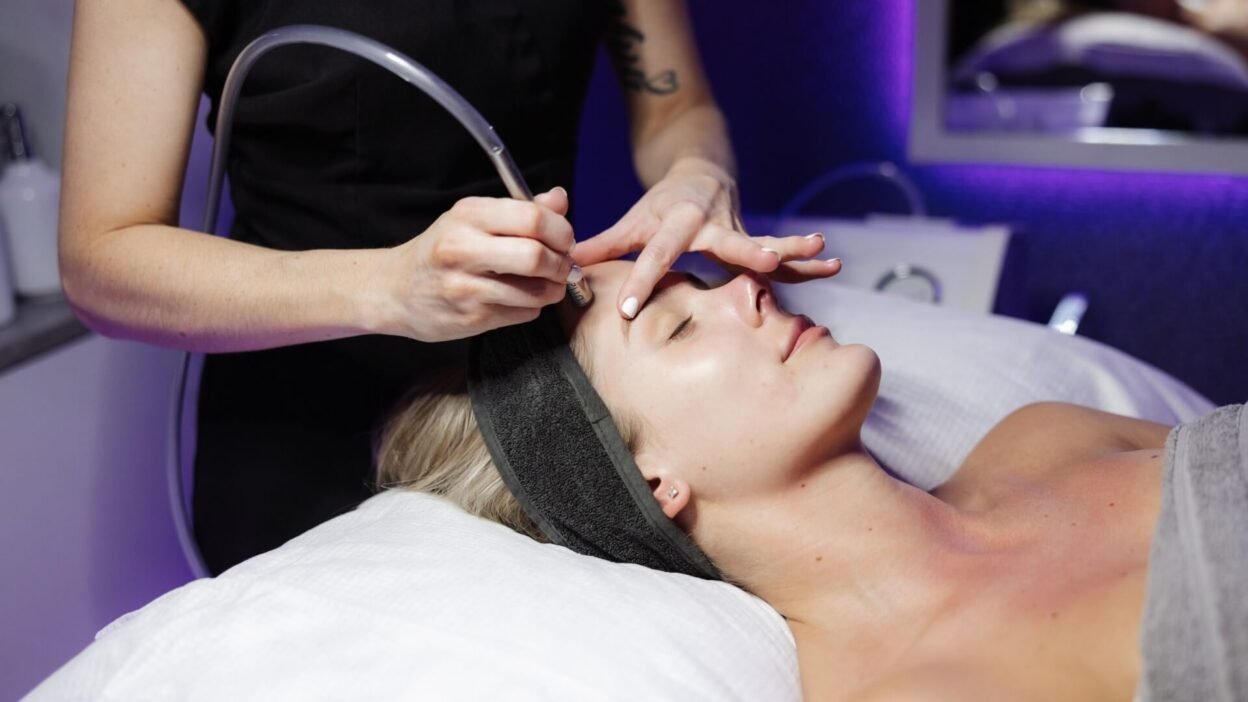When exploring skin rejuvenation options, many individuals find themselves weighing the benefits of Microdermabrasion Abu Dhabi against chemical peels. Both treatments aim to improve skin texture, tone, and overall appearance, but they do so through different mechanisms and with varying results. Understanding the nuances of each procedure is essential for making an informed decision that aligns with your skincare goals. This comprehensive guide delves into the differences, benefits, and suitability of microdermabrasion and peels, enabling you to determine which treatment might be best suited for your needs.
Understanding Microdermabrasion and Chemical Peels
What is Microdermabrasion?
Microdermabrasion is a minimally invasive procedure that involves exfoliating the outermost layer of dead skin cells using fine crystals or a diamond-tipped wand. This process stimulates natural cell renewal, revealing fresher, smoother skin underneath. Known for its quick recovery time and gentle approach, microdermabrasion is popular among those seeking a non-invasive way to enhance skin clarity and reduce minor imperfections.
What are Chemical Peels?
Chemical peels involve applying a solution containing acids, such as glycolic, salicylic, or trichloroacetic acid, to the skin. This solution causes controlled exfoliation, removing damaged skin layers and encouraging new skin growth. Peels can vary from superficial to deep, depending on the depth of skin removal and the specific skin concerns addressed. They are versatile treatments capable of targeting a broader range of skin issues, including pigmentation, scars, and fine lines.
Key Differences Between Microdermabrasion and Peels
Mechanism of Action
- Microdermabrasion mechanically exfoliates the skin’s surface using abrasive techniques to remove dead cells.
- Chemical peels chemically dissolve the bonds holding dead skin cells together, promoting peeling and regeneration.
Depth of Skin Removal
- Microdermabrasion typically targets the superficial layer of the skin, making it suitable for mild skin concerns.
- Peels can be tailored to penetrate various depths, from superficial to deep, allowing for more significant correction of skin issues.
Procedure Duration and Downtime
- Microdermabrasion sessions are usually quick, often completed within 30 minutes, with minimal downtime.
- Chemical peels vary in duration depending on the depth, with deeper peels requiring longer recovery periods.
Suitability for Skin Types and Concerns
- Microdermabrasion is ideal for dull skin, minor discoloration, and surface unevenness.
- Peels are more effective for pigmentation issues, acne scars, and signs of aging, with options available for different skin types.
Benefits of Microdermabrasion
Gentle and Non-Invasive
Microdermabrasion offers a gentle approach suitable for sensitive skin, providing noticeable results without discomfort or significant downtime.
Suitable for All Skin Types
Since it is a superficial treatment, microdermabrasion can be safely performed on various skin types and tones, making it a versatile choice.
Immediate Results and Maintenance
Many patients notice an immediate improvement in skin brightness and texture post-treatment. Regular sessions can maintain and enhance these results over time.
Versatility in Addressing Skin Concerns
Microdermabrasion can effectively reduce the appearance of blackheads, minor scars, sun damage, and uneven skin tone, making it a comprehensive skin rejuvenation option.
Advantages of Chemical Peels
Deep Exfoliation and Skin Renewal
Peels can penetrate deeper layers of the skin, addressing more complex issues like hyperpigmentation, deep scars, and significant signs of aging.
Customizable Treatment Depth
The ability to tailor peel strength allows for personalized treatment plans based on individual skin needs and tolerances.
Long-Lasting Results
Deeper peels often provide more sustained improvements, especially when combined with proper skincare routines.
Enhancement of Skin Texture and Tone
Chemical peels can significantly improve skin smoothness, brightness, and clarity, especially when multiple sessions are performed.
Comparing Results and Effectiveness
Immediate and Long-Term Outcomes
- Microdermabrasion provides immediate, visible improvements with consistent sessions leading to cumulative benefits.
- Chemical peels may require a recovery period but can produce more profound and lasting results, especially for deeper concerns.
Suitability Based on Skin Concerns
- For superficial skin issues like dullness and minor imperfections, microdermabrasion is often sufficient.
- For more severe concerns such as deep scars, pigmentation, and pronounced aging signs, chemical peels tend to be more effective.
Choosing the Right Treatment for You
Assessing Your Skin Goals
Identify your primary skin concerns—whether surface-level dullness or deeper pigmentation—to determine the appropriate treatment.
Consultation with a Skincare Specialist
A professional consultation is vital to evaluate your skin type, history, and goals, ensuring a personalized and effective treatment plan.
Combining Treatments for Optimal Results
In some cases, combining microdermabrasion and chemical peels can yield enhanced outcomes, addressing multiple concerns through a tailored approach.
The Role of Skincare Maintenance
Post-treatment skincare, including sun protection and hydration, plays a crucial role in maintaining and prolonging the results of both microdermabrasion and peels. Regular follow-up sessions and a consistent skincare routine can optimize skin health and appearance over time.
Final Thoughts: Which Is Better for You?
Deciding between Micro dermabrasion in Abu Dhabi and chemical peels depends on your specific skin concerns, desired results, and skin sensitivity. Microdermabrasion offers a gentle, quick, and effective solution for surface imperfections, making it ideal for those seeking minimal downtime and maintenance. Conversely, chemical peels provide deeper exfoliation, addressing more complex skin issues with longer-lasting effects. Consulting with a qualified skincare professional is the best way to determine the most suitable option tailored to your unique needs.
Frequently Asked Questions (FAQs)
1. Can microdermabrasion be combined with chemical peels?
Yes, combining microdermabrasion with chemical peels can enhance overall skin rejuvenation, with microdermabrasion preparing the skin for a deeper peel or vice versa. However, this should be done under professional guidance to ensure safety and optimal results.
2. How often should I undergo microdermabrasion treatments?
Typically, microdermabrasion sessions are scheduled every 2 to 4 weeks, depending on individual skin conditions and goals. Regular treatments help maintain skin clarity and texture improvements.
3. Are chemical peels suitable for all skin types?
While superficial peels are generally safe for most skin types, deeper peels may require careful consideration based on skin sensitivity and pigmentation. A consultation with a skincare specialist can help determine suitability.
4. What skincare routines should I follow post-treatment?
Post-treatment skincare should include sun protection, gentle cleansing, and moisturizing. Avoiding harsh products and following professional recommendations will support healing and prolong results.
By understanding the distinctions and benefits of each treatment, you can confidently select the most appropriate option for your skin’s needs, paving the way for healthier, more radiant skin.




